#la franja de ponent
Text

panadons, setmana santa 2023
aquest plat es típic de setmana santa a ponent i la franja d'aragó, on es farcix pasta amb espinacs i panses, o amb carabassa.
#mirant receptes veig q hi ha molta gent q hi posa pinyons. no se si us creieu q tenim aquí diners per a tirar pero NO#espinacs i alls (i panses per a qui li agradon). i molt molt molt oli. i ja está el relleno. fàcil simple i casolà#i lo mes important: la cosa mes bona q pots menjar <3#las mías fotos#coses de la terra
15 notes
·
View notes
Note
Is Valencian really synonymous with Catalan, I thought Valencian is what’s spoken in France and Catalan in Spain?
Yeah, they are the same and your confusion wouldn't make any sense. The only part of the Catalan Countries that is under French government is Northern Catalonia, in French called pays catalan (Catalan Country) and they would only refer to the language as Catalan (català) or, at most, rossellonès (which is the name of their regional dialect of Catalan and sometimes they just use it to refer to the language).
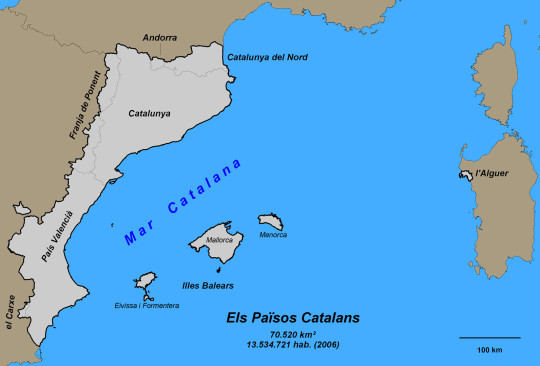
Valencian and Catalan are two names that refer to the same language. Think of how in American English they call the sweet baked good a "cookie" and in British English they call the same thing a "biscuit". Both of those words still refer to the same thing, but are different names used in different dialects. In the same way, in different parts of the Catalan-speaking territories they favour one word or the other.
Out of all the Catalan-speaking territories (called the Catalan Countries), the usual word is as follows:
The name "Catalan" is used in Catalonia (the one under Spain), Northern Catalonia (the one under France), Andorra (the independent micro-state), the Balearic Islands (again, under Spain), and la Franja de Ponent also called Franja d'Aragó (again, under Spain).
The name "Valencian" is used in the Valencian Country and el Carxe. (Both under Spain and the furthest away from France out of all the Catalan Countries). These areas use the word "Valencian" but the word "Catalan" is also used even though less commonly, as you saw in the video Isabel Clara-Simó was using both words interchangeably in the same sentence.
In L'Alguer, the most usual word to call the language is "Alguerese", though the term "Catalan" is also used.
If you're familiar with Spanish, think of how the language is called both "castellano" and "español", and some countries might use one word more than the other. For example, Spain and Argentina say they speak "castellano", while Mexico says they speak "español". But all of them are referring to the same. It's not that "español" is spoken in Mesoamerica and "castellano" in Spain, you know?
I'm trying to think of where your confusion could come from. I think maybe you're thinking of the city Valence in Occitania (Southern France)? Maybe you were thinking of that. But that's outside of the Catalan Countries, they don't speak Catalan there. Their original language is Occitan, and Occitan has been called many names depending on the dialect (same as I've explained happens with Catalan) and has also used different terms during history, but those terms are "Provençal", "Gascon", "Limousin", etc but never "Valencian".
12 notes
·
View notes
Text
HISTORIA DE MIS ANTEPASADOS CON APELLIDO LANAU FUNDADORES DE LA CIUDAD DE VITORIA EN EL S.XI Y QUE POSTERIORMENTE EMIGRARON A LA POBLACIÓN DE GRAUS EN HUESCA (ARAGÓN) EN LA FRANJA DE PONENT DÓNDE TAMBIÉN EXISTEN ANTEPASADOS MÍOS CON EL APELLIDO MASCARAY, PERO LEYENDO LA HISTORIA DE LA POBLACIÓN Y DE SU OCUPACIÓN ISLÀMICA, RECONQUISTADA POR LOS BORBONES, POR LOS FRANCESES, AUSTRIACOS...DEBO TENER SANGRE EN MIS VENAS DE TODO CRISTO Y AHORA ENTIENDO PORQUE A MI SIEMPRE MI FAMILIA ME HA LLAMADO "EL PRINCIPE" Y MIS AMIGOS Y MIS VECINOS SIEMPRE ME HAN DICHO QUE ME PARECÍA MUCHÍSIMO AL ACTUAL REY DE ESPAÑA Y ME LO CONFIRMA LA HISTORIA DE GRAUS POR PARTE PATERNA Y ME FALTA AVERIGUAR LA HISTORIA DEL PUEBLO DE MI MADRE CARMONA EN SEVILLA DÓNDE HUBO MUCHO TERRATINIENTE Y GENTE DE LA REALEZA DE BÉLGICA, HOLANDA Y ALEMANIA...POR ÉSO MI MADRE ES RUBIA CON OJOS VERDES Y YO MIDO 194CMS LA ESTATURA MEDIA DE CUALQUIER ESPAÑOL, MIDO 3 CMS MENOS QUE EL REY DE ESPAÑA...ALGO POR MIS VENAS CORRE QUE NO SÉ Y LO VOY AVERIGUAR LE PESE A QUIEN LE PESE...LA HISTORIA ESTÁ ESCRITA, NO LA HE ESCRITO YO:
Historia de Graus:
Los primeros datos de población de Graus se remontan al Paleolítico como lo demuestran los restos hallados en el yacimiento de Las Forcas, cuyos restos se encuentran en el museo provincial de Huesca. De la época romana no quedan restos y de la islámica solo se conservan restos de una atalaya en la peña del Morral.[7]
Durante la Reconquista, el rey aragonés Ramiro I murió durante el asedio de la población en 1063. Fue su hijo el rey Sancho Ramírez quien la tomó en el año 1083 y la adscribió al monasterio de San Victorián para su reconstrucción y repoblación, lo cual duró hasta 1571. Pedro II trasladó aquí la feria de San Miguel que hasta entonces se venía celebrando en San Pedro de Tabernas.[7]
Iglesia de Santa Cecilia junto al castillo de Fontova, en el despoblado del mismo nombre.
Un hecho fundamental para la tradición local se produjo en el año 1415 cuando, de camino hacia Francia, visitó la villa el dominico valenciano fray Vicente Ferrer, posteriormente canonizado, quien al parecer recaló en Graus invitado por Berenguer de Bardaxí. Ambos habían sido compromisarios tres años antes en Caspe, donde se resolvió de manera pacífica el difícil problema sucesorio de la Corona de Aragón. El santo valenciano predicó aquí con gran éxito y en agradecimiento regaló a la villa un crucifijo que se conserva y se venera en su iglesia parroquial. Las fiestas mayores de la localidad los días 13 y 14 de septiembre están dedicadas a San Vicente Ferrer y al Santo Cristo, en recuerdo de tan celebrada visita y apreciada donación. Junto con el santo vino Pedro Cerdán, fraile dominico al que según la tradición San Vicente Ferrer le devolvió el habla y el oído. Enfermó al llegar a la villa y murió en la misma en 1422 y le enterraron en la basílica de la Peña.
En el siglo xvi se llevó a cabo la primera ampliación, construyéndose casas solariegas como la de Fantón, Solano, Oliván y la Mansión de los Mur. También se abrió la plaza mayor y la calle Fermín Mur y Mur, fijándose por consiguiente el límite de la población en el portal de Linés. A finales de este siglo tuvo lugar en el condado la guerra de Ribagorza, contra los condes de Ribagorza.[7] En 1588, Felipe II estableció la celebración de una feria semanal todos los lunes que ha perdurado hasta ahora. A estas hay que añadir posteriormente la ferias de Santa Lucía, otorgada por Carlos II en 1681, y la de mayo (actual Propirineo).
Durante el siglo xvii se sucedieron guerras contra Francia, con lo que Graus se convirtió en punto de paso y proveedor de comida de las tropas. En los años 1651 y 1652 la zona sufrió una epidemia de peste que diezmó a la población. En este mismo siglo se construyó a extramuros el colegio jesuita de la Compañía de Jesús y el convento de Santo Domingo, de los cuales actualmente solo se conserva la iglesia del primero.[7]
En la Guerra de Sucesión a principios del siglo xviii la población tomó partido por el pretendiente austriaco, al igual que la mayor parte de la Corona de Aragón. Las tropas borbónicas ocuparon la localidad, destruyeron uno de sus puentes y la convirtieron en base para operaciones militares.[7]
Graus a comienzos del siglo xx
Durante la Guerra de la Independencia Graus fue invadida por las tropas francesas y en las posteriores guerras carlistas se produjeron enfrentamientos entre liberales y absolutistas. En 1873 estuvo encarcelado Paul Lafargue, yerno de Karl Marx y propagador de sus ideas, que había huido de la policía francesa atravesando los Pirineos. A finales de este siglo, se produjo una importante emigración a Francia. Es en esta época cuando se realizó la segunda gran ampliación urbana, con la construcción de la calle Barranco.[7]
En el municipio se integraron ya en el siglo xix Grustán, Portaspana y Torre de Obato, y en la década de 1920, Barasona y Benavente de Aragón.
Al estallar la Guerra Civil, Graus quedó en la zona republicana, con predominio del movimiento anarquista. Se produjo la ejecución de numerosos religiosos y la destrucción de importantes piezas del patrimonio cultural. Posteriormente, en los años 60, sufrió al igual que en el resto del país el éxodo rural hacia las grandes ciudades.[7] En estos años se incorporaron al municipio los términos de Aguinalíu, Panillo, Puebla de Fantova y Torruella de Aragón, y en la siguiente década, Güel y Torres del Obispo.
#huesca#catalunya#cataluña#felipe vi#letizia ortiz#infanta leonor#infanta sofia#carles puigdemont#sabadell#españa#barcelona#zaragoza#teruel#lleida#tarragona#girona#charlotte casiraghi#pierre casiraghi#andrea casiraghi#vitoria#euskadi
1 note
·
View note
Photo

🇸🇽 08212 - Philippines by Bellver Joanot Jeepneys of Siquijor, Philippines The first 'jeepneys', the main public transport in many Philippine cities, as well as between regional centers, were modified SUVs that the US military abandoned in the country after World War II. Customized with Filipino details, they sport chrome, colorful headlights, radio antennas, paintings of the Virgin Mary or comic book characters. Service routes are written on the sides of the vehicle. + Informació ************ All right reserved - Contact: [email protected] ************ All my photos in one click - Archeology - Canary Islands - Catalonia - Castles - Cemeteries - Vatican City - Dron - Egypt - Euskal Herria - Explorer - Facebook - Fauna - Flora - Fluidr - France - Galicia - Illes Balears - Insects - Interesting - Italy - La Franja de Ponent - Morocco - Nature - País Valencià - Països Catalans - Philippines - Portugal - Turkey - Urbex - Recent - Retrats i robats - Sets - Som - Spain https://flic.kr/p/2n6CDLs
0 notes
Photo

El projecte sobre l’onomàstica al Bruc, d’Assumpció Rehues, guardonat amb el III Premi Ramon Amigó Aquest guardó està convocat per la Fundació URV i el dota la Direcció General de Política Lingüística amb 6.000 €. Es concedeix a treballs de recerca que tinguin com a objectiu la confecció d’inventaris de noms de lloc i de persona. En aquesta edició s’hi havien presentat 9 projectes. La directora general de Política Lingüística, Ester Franquesa Bonet va destacar que la tercera edició d'aquest premi hagi rebut propostes d’altres territoris del domini lingüístic, com ara de la Catalunya del Nord, la Franja de Ponent, les Illes Balears i el País Valencià. També es va felicitar perquè el projecte premiat en la primera edició ja s'hagi editat. Assumpció Rehues ha de desenvolupar el treball que ha resultat guanyador durant els dos propers anys, del qual en farà seguiment el Departament de Filologia Catalana de la Universitat Rovira i Virgili - URV i l’Oficina d’Onomàstica de l’ Institut d'Estudis Catalans. https://ift.tt/2KzpPbi
0 notes
Text
[MAPA] A qué municipios hay brotes de coronavirus?
[MAPA] A qué municipios hay brotes de coronavirus?


El 21 de junio se puso punto final al estado de alarma en España. Y con la reanudación de la normalidad, no han cesado de salir brotes de coronavirus en todo el país. En dos semanas, hay más de cuatrocientos casos positivos y un total de trece brotes que se concentran en Avinyó (Barcelona) , Castellón, la Franja de Ponent, la Garrotxa, la Segarra, Segrià, Rafelbuñol (Horta Nord) y Valle de Aran.
View On WordPress
0 notes
Text
Rock climbing in Margalef Spain (all in Espadelles)
La homiga atomica 6a+ got quite pumped on this for a warm up!
Ni pa te 6b was a really nice climb and actually felt easier than the 6a+ strangely
Kagaito sakapoko 6c+ rested on second and third bolt trying to find the more positive pockets. Would be a nice one to go back and try again although I was pretty pumped on it so not sure if I would be strong enough just yet
Guirlache 6c I went directly through the roof / slightly left at the top and made it so much harder for myself! Only just made it to the belay chain without falling off! Fred tried it and went right over the roof and seemed to find it way easier than me!
Gest d’inocencia 6b+ the start was quite bouldery but positive holds and enjoyable. The top goes diagonal left which somehow makes the bolts feel further apart so a good climb for the head as a warm up!
Tastavins 6b+ a tricky start so it was nice to use a clipstick for the first bolt as you yard up on a small pocket from a pile of rocks on the ground that are awkwardly balanced. The rest of the climb is really fun. You go up this where there are cracks and tufa like features but also smooth looking flow stone. The overhang is good fun and the holds are all there out on the right
Sobredosis de rocaina 6c I climbed the route fine until the overhang and then found it quite reachy and pumpy! Fred found it ok so I decided to give it another go as I had to rest but when I tried it again it made no difference! A hard route for me to crack without getting too pumped and falling mid way up!
Que pasa neng 7a onsighted this one! Think it’s a soft 7a but it’s super fun, overhanging but positive at the bottom and thin and technical at the top.
Memoria histerica 6b this was a nice climb, fairly simple and not as interesting as the 6b+ next to it though. Decent warm up.
Repos actiu 6c+ the first time I tried it I found it super pumpy as I didn’t know the moves. I put the clips in and tried it again having figured out the moves and cruised it which felt nice
Dulce Bella 7a phew! I took 3 massive falls on this. I found the top section really hard after the two holes. I had to come down and let Fred try it as I couldn’t finish it. I tried it again on top rope after Fred had done it but I was really tired and still found the top half really tricky. The last moves to get to the chain are so horrible I don’t think I would try and Redpoint the route. Simply because you have to go direct up and then somehow step right to grab the chain which I would find incredibly hard after the entire pumpy route! Such a beautiful line but one I need to be stronger for and the bolts are a bit run out at the top so having taken those 3 massive falls it was a bit mentally exhausting too!
Punt x 6b+ had a really hard crux in the middle where both Fred and I came off with our hands in the wrong position. Neither interesting or a good warm up!
Punto de gravedad cero 6c the start was quite delicate and strong fingers are required but overall it’s a great climb with some hand jamming and laybacks further up! After the start it’s fairly relaxed climbing for the grade
Beta de boira 7a I love this climb and it was soft for the grade. The first two bolts were tricky as it was hard pulling onto the wall but after that all the handholds were there and there were plenty of rests. The corner up top was great for bridging which meant less pump! Onsight for both Fred and I.
Franja de ponent 7a a really hard pull onto the wall to start on the first move. Reading the route ahead of time helped as I knew when to go left and where all the good holds were on the pumpy first section. Lots of rests again and the top section had surprisingly large holds for a 7a. Onsight for both Fred and I.
Te lo juro por mi iPhone 6b had a thin start that felt extremely hard for a 6b, I think Fred and I both pulled on the quickdraw!
Redue! Me faras consomi 6b+ had a thin start and then a pumpy move left through the break
Mi Tito Hirrou 6b nice warm up. Small ish holds but all positive and no crux move
La Ruta de Unai 6b+ another nice warm up. Similar to its neighbour.
Stratochalster 7a this felt like a real 7a! The start had a really bouldery strong move which both Fred and I struggled on although I was able to get my foot higher which helped a little bit but I couldn’t really do it! Then after the break over the overhang was steep on un positive holds! I was wrecked trying the moves and had to pull on the quick draw even though Fred marked some holds for me. Then at the top all of a sudden it got run out! I liked the variety of the route but it was certainly one I would need to work a lot or get stronger for!
Aixo no es pot resistir a chilled warm up with some nice moves. Quite nice to start on this wall in the morning as it gets the sun and then move over to the opposite main wall in the afternoon
Setareh 6c lots of jugs and a little overhanging. An easy one to onsight and got a little pump on.
Abanibi 6c this was a little more tricky to figure out the moves. It was less pumpy as you get the corner to bridge out on but it took me longer to figure out whether to go on the arete lower down and then whether to stick right in the corner higher up or not. But an onsight without pump which is a little more technical is nice.
Overbooking 6c not quite as nice a route as it’s neighbours. It’s not as visited therefore the holds are hard to find. The holds are small and sharp at the beginning so it gives the route a bit of a punchy start. I warmed up on it so had a couple of rests but then left the quick draws in and gave it another go after and it was fine.
Supermana 6c technical start followed by a juggy (for vertical) end. I didn’t onsight the beginning as I tried to go straight up rather then slightly right in the crux. I didn’t bother doing it again as wanted to climb some others
Ller crack 6c+ felt easier than its neighbour guirlache!
On our rest days we went to playa larga and Tarragona which were both really nice
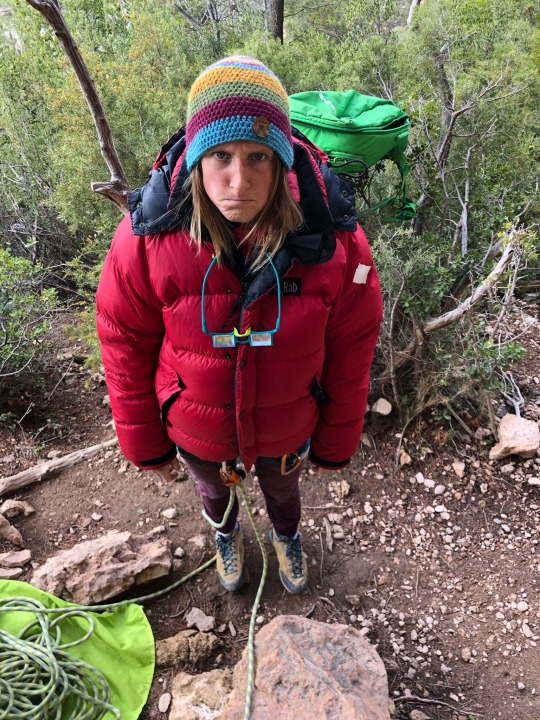

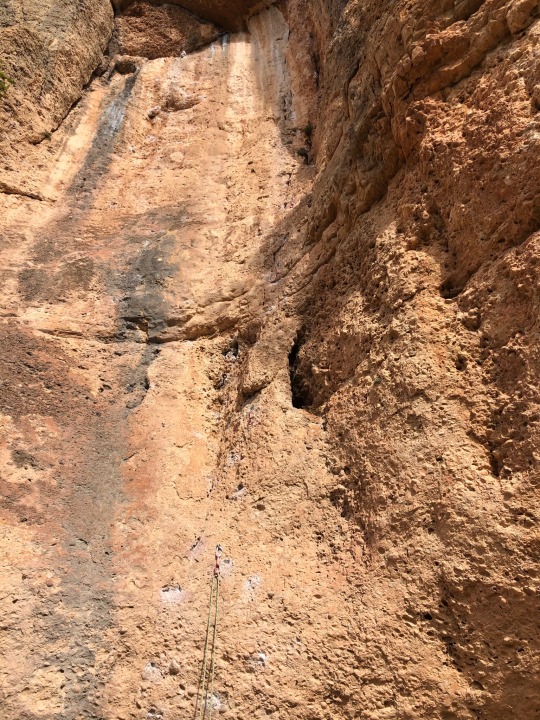

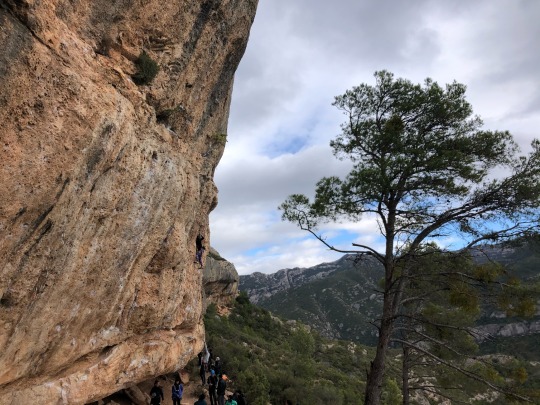
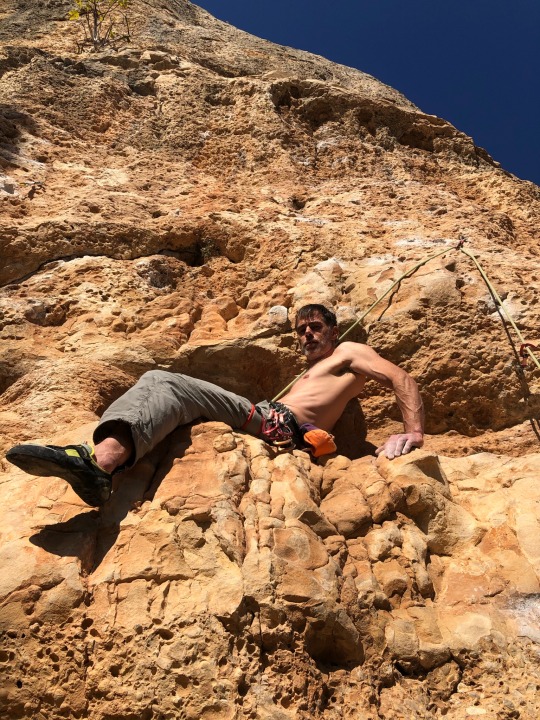
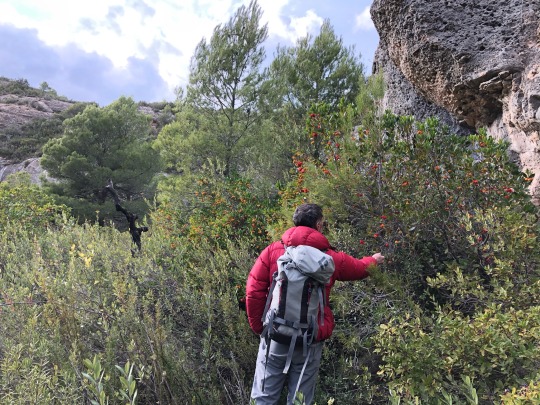
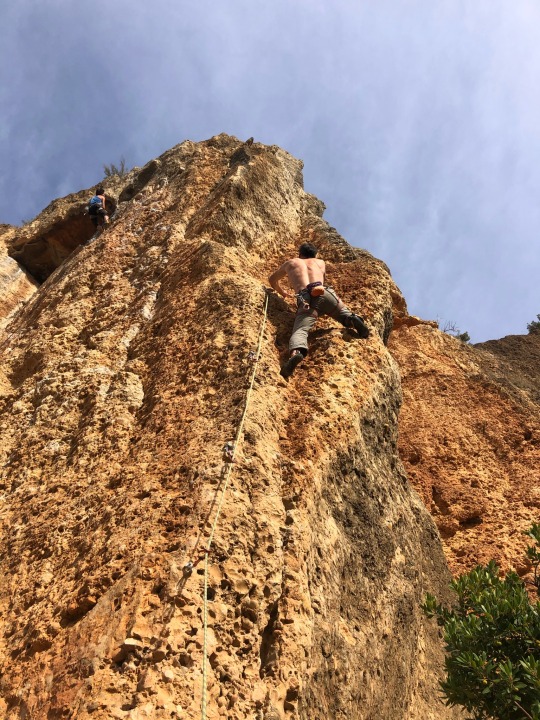
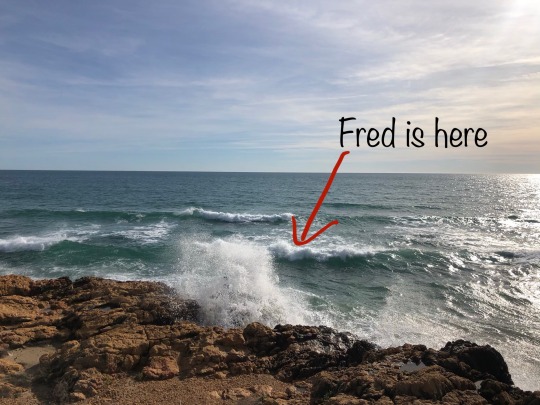

0 notes
Text
Des del 2n l'article, fent clic al 2n enllaç us durà a la recollida de firmes.
20 notes
·
View notes
Text
Derogar el concordato, una tarea urgente
La inesperada victoria de Pedro Sánchez en la moción de censura contra Mariano Rajoy ha puesto de actualidad un gran número de problemas, larvados durante años, cuya solución es imprescindible para la construcción de un estado moderno que rompa definitivamente los lazos que unen al actual con el anterior régimen dictatorial franquista.
Uno de los más importantes es seguramente el de las normas que deben regir las relaciones entre el estado y las distintas confesiones religiosas. La connivencia de la iglesia católica con la dictadura, iniciada desde los primeros momentos de la guerra civil provocada por los golpistas, propició una larga serie de privilegios y prebendas que han perdurado hasta ahora. La transición, supuestamente modélica, hacia un estado democrático se articuló mediante una serie de normas que trataron de minimizar las pérdidas para la poderosa y próspera iglesia católica, particularmente para su jerarquía. Y todo ello con un barniz de separación entre iglesia y estado que cubriera las apariencias sin tocar ninguna prerrogativa importante.
El primer cortafuegos para evitar perder la situación de privilegio del catolicismo se estableció en el propio texto constitucional. El debate de los ponentes constitucionales, de evidentes posturas contrapuestas en este asunto, derivó en una disparatada redacción que, por un lado, declaraba el estado aconfesional y, por otro, obligaba a mantener las consiguientes relaciones de cooperación con la Iglesia católica. Tamaño dislate puede entenderse únicamente si esta mención fue una de las condiciones irrenunciables de los que negociaban desde la posición de superioridad que proporciona el poder.
La segunda norma establecida fue el concordato, oficialmente llamados Acuerdos con la Santa Sede de 1979. Una normativa dedicada exclusivamente a enumerar todo tipo de privilegios encaminados a financiar con el erario todo tipo de asuntos jurídicos, económicos, educativos y proselitistas, y a dispensar a la iglesia católica del pago de impuestos sobre rentas y patrimonio.
Estos Acuerdos son un lavado de cara del anterior Concordato de 1953, redactados subrepticiamente por un gobierno aún franquista antes que la propia constitución y firmados en la Ciudad del Vaticano sólo cinco días después de que entrara en vigor la nueva Constitución al ser publicada en el BOE el 29 de diciembre de 1978.
Aún quedaría por hablar de la Ley de Libertad Religiosa de 1980, nacida de nuevo para privilegiar a la religión católica frente a otras confesiones y, también, frente a la ausencia de ellas. Asuntos como funerales de estado, presencia de autoridades en actos religiosos y los juramentos y promesas de los cargos públicos, deben ser regulados urgentemente para separar claramente el estado de la iglesia católica.
Tras 40 años de vigencia de la constitución de 1978, la sociedad española ha sufrido una espectacular transformación desde el punto de vista religioso, pasando de ser aplastantemente católica y mayoritariamente practicante a ser una de las más secularizadas de Europa y, consiguientemente, de todo el mundo. Una transformación que, a la vista de las estadísticas de religiosidad por franjas de edad, no va a dejar de acelerarse en los próximos años. La adecuación normativa a esta nueva situación es, por tanto, ineludible y, con el paso del tiempo, será cada vez más urgente. Esto atañe a la reforma de la propia constitución pero, con carácter previo, deben ser derogados los acuerdos con la Santa Sede y sustituida la ley de Libertad Religiosa por un ley de Libertad de Conciencia. Solo así se conseguirá una relación del estado con las distintas confesiones propia del siglo XXI, y no anclada en una normativa nacionalcatólica proveniente de una dictadura del siglo XX, e incluso de apariencia decimonónica.
El comienzo del gobierno de Pedro Sánchez, cuyos ministros han prometido todos el cargo sin biblia ni crucifijo ha sido esperanzador. Pero, más allá de este gesto simbólico de laicismo, no se sabe que se haya producido ningún movimiento más allá de algunas buenas palabras. Queda tiempo aún, pero urge sacudir todo este ropaje nacionalcatólico que nos han obligado a vestir a nuestro pesar.
Naturalmente, hay otro vestigio franquista del que nos tenemos que deshacer, la monarquía borbónica reinstaurada por el dictador. Una institución que, cada vez más, pierde prestigio a raudales a medida que salen a la luz sus partes más escabrosas, herencia de actitudes y comportamientos naturales durante la dictadura que los llevó de nuevo al poder. Pero esa es otra historia.
Salud.
etiquetas: artículo
» noticia original ()
0 notes
Note
Are there any Catalan speakers who don't speak Spanish?
Yes, mostly in the parts of the Catalan Countries that are not under Spanish occupation. Those are: Northern Catalonia (under French rule, so they speak French), l'Alguer (they speak Italian) and Andorra (an independent country where most people learn both French and Spanish but not everyone will speak both equally well).

That's a map of the Catalan Countries. The parts I've highlighted in red are controlled by the state of Spain: Catalonia, la Franja de Ponent, the Valencian Country and the Balearic Islands. Here, everyone speaks Spanish, it's mandatory by law that we must speak Spanish. Nowadays, it's recognised we also have the right to speak Catalan, but nobody has the obligation to know it. A shitty imperialist law that puts Spanish above the language of the land, but it gives you an idea.
The smaller area I've highlighted in blue is Northern Catalonia, which was annexed by France in 1659. That's before Spanish was imposed in Catalonia, so Northern Catalonia has never spoken Spanish (except like, if someone learned it on their own in the same way you'd learn any other foreign language, but there has not been a state-led programme of Spanish imposition like in the south). Instead of having Spanish imposed on them, they had French.
And the purple part is l'Alguer, in the island of Sardinia (Italy). It's only one city.
In the areas under Spanish rule, there are some people with disabilities who only speak Catalan, and you could also still find a few (but very few) elderly people in rural areas who also only speak Catalan.
There's also foreign people who aren't from the Catalan Countries but who have chosen to learn Catalan. They have to be careful because they are often mistreated by the Spanish police. They have repeatedly reported being harassed by the Spanish police in airports when landing in Catalonia because the Spanish police doesn't believe someone would learn Catalan and not Spanish, so when they can't answer in Spanish they get angry and sometimes arrest them. Catalan people have been sentenced to pay a fine for speaking in Catalan to a Spanish policeman in the airport too (it's considered disrespect of authority to speak to them in Catalan, plus they'll add a bunch of made-up crimes to make you pay a fine for it, even a fine of 200,000€, or they take your passport to make you miss your flight, threaten you, or hit you while shouting anti-catalan slurs against you while waiting at the airport security), but with foreign-born people who don't speak Spanish they literally don't have a choice, they can't do that.
I remember a case from two years ago, there was a Flemish man who lived in a town in Catalonia, he spoke Catalan but not Spanish because everyone in the town spoke Catalan. The cops harassed him, humiliated him in front of everyone, made fun of the fact that he had to wear an ostomy pouching system as a result of a medical operation (basically it's when your digestive and excremental systems don't work correctly so you have a bag connected to your belly that collects the excrements) and the cops forced him to take off his trousers right there in the line to show the excrement bag. Then the cops arrested him and took him to a small room where they reported him for the crimes of perturbing public order. Then they made him get naked, supposedly to show the excrement bag, but then the cops decided they didn't want him to remove his trousers even though it's the only possible way to show it, so they made him take off his shirt for absolutely no reason. They kept him there shirtless and registered his suitcases and interrogated him (all of this, in Spanish which he had said he has a hard time understanding). At one point, the cops asked him the name of the town and wrote it down wrong, then he told them they had clicked the wrong one and repeated the correct one, but the cops got angry for being corrected and reported him for the crime of refusing to cooperate with the police. He was banned from flying and could not go back home. (x)
So yes, there are Catalan speakers who don't speak Spanish, but if you live in the Spanish-occupied part of the Catalan Countries (which is most of it) you have to learn it. If you're born and raised here, there's no way you'll grow up without knowing Spanish even if you don't speak it at home because it's everywhere: on the TV, cinemas, schools, etc.
13 notes
·
View notes
Photo
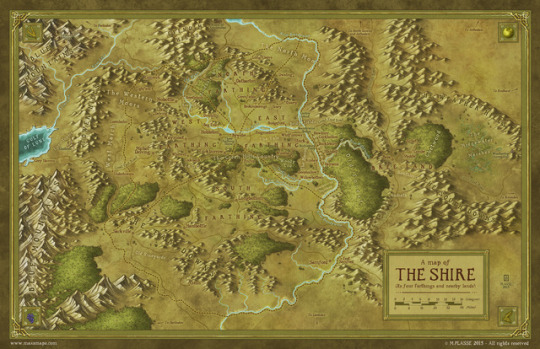
Mapa de la Comarca en anglès, amb els pobles coneguts i les divisions en quatre quartons més la Franja de Ponent.
#mapa#cartografia#Terra Mitjana#fantasia#fantàstic#Sûza#Sûza-t#Trann#mapa fantàstic#cartografia fantàstica#i Drann#la Comarca#Comarca#tolkienià
0 notes
Photo

08205 - Cabanyal by Bellver Joanot Cabanyal, Poblats Marítims de València (l'Horta) PaísValencià, ************ All right reserved - Contact: [email protected] ************ All my photos in one click - Archeology - Canary Islands - Catalonia - Castles - Cemeteries - Vatican City - Dron - Egypt - Euskal Herria - Explorer - Facebook - Fauna - Flora - Fluidr - France - Galicia - Illes Balears - Insects - Interesting - Italy - La Franja de Ponent - Morocco - Nature - País Valencià - Països Catalans - Philippines - Portugal - Turkey - Urbex - Recent - Retrats i robats - Sets - Som - Spain https://flic.kr/p/2n5mHE7
0 notes
Link
Ramón Jacinto Prades Ribera El 3 de julio de 1905 nace en Mazaleón (Matarraña, Franja) la anarcosindicalista Ramón Jacinto Prades Ribera. Sus padres se llamaban Julio Prades Perfagés y María Rosa Ribera Costa, con dos militantes anarcosindicalistas. Labrador de profesión, militó activamente durante los años republicanos en la Confederación Nacional del Trabajo (CNT) y en la Junta del Centro Obrero de su pueblo natal, que había sido fundado por su padre y otros compañeros en los años veinte. Estaba casado con Asunción Cañizar Agudo, con quien tuvo una hija, Pilar Prades Cañizar, y un hijo, Germinal Prades Cañizar, que murió a los cinco meses de nacer. Cuando la Revolución, fue presidente del primer Comité Revolucionario y uno de los principales impulsores de la Federación Comarcal de Colectividades del Matarraña, de la que fue secretario en Valderrobres (Matarraña, Franja de Ponent), donde se había trasladado con su familia. En agosto de 1937 fue detenido en Alcañiz (Teruel, Aragón, España) por la contrarrevolución estalinista contra las colectividades libertarias; trasladado a Caspe (Zaragoza, Aragón, España), fue encarcelado el 12 de agosto de 1937 en la Torre del Bos
0 notes
Video
youtube
Sergi Fernández fa un recorregut en BTT des del Delta de l'Ebre fins al cim de l'Aneto passant per tota la Franja de Ponent.
0 notes
Text
Carlos Malpica Flores: El CGAC repite su ciclo Arte en el aula en 2019
El CGAC repite este ciclo de cursos prácticos para docentes que plantea el arte contemporáneo como herramienta de aprendizaje en el aula.
El programa está estructurado en torno a tres ejes de gran presencia en la educación formal (las matemáticas, la narración y el conocimiento del entorno natural) y diseñado para explorar los límites entre áreas de conocimiento e invitar a los educadores a experimentar y aprender antes de llevar sus propuestas al aula.
A través de una metodología dinámica y participativa se alternarán visitas a las salas del CGAC y a su entorno próximo, proyecciones de imágenes, sesiones de observación, reflexión y debate, talleres de creación y elaboración de propuestas didácticas.
Cada bloque se plantea de forma independiente pero dentro de una estructura y objetivos comunes. Los participantes pueden cursar uno o todos los bloques en función de si su interés es puntual y temático o pretenden una experiencia de mayor significatividad.
PROGRAMA
1 y 2 de febrero de 2019
Matemáticas con arte.
5 y 6 de abril de 2019
Imágenes que cuentan historias.
15 y 16 de noviembre de 2019
Arte y ecología.
IMPARTE:
Gael Zamora Lacasta, titulada en Historia del Arte y Educación Primaria. Ejerce como profesora del Departamento de Didáctica de la Expresión Musical, Plástica y Corporal en la Facultad de Educación de Segovia de la Universidad de Valladolid. Es además educadora artística con amplia experiencia en museos con todas las franjas de edad dentro de la educación formal y no formal. Tiene experiencia como coordinadora y ponente en cursos para docentes sobre creatividad, recursos didácticos y arte en el Museo de Arte Contemporáneo Esteban Vicente, el Centro para las Artes y el Diseño Palacio Quintanar, el Museo Lázaro Galdiano, la Universidad Complutense de Madrid, la Universidad de Valladolid, La Universidad Autónoma de Madrid, el Movimiento de Renovación Pedagógica Acción Educativa y los Centros de Formación del Profesorado de Segovia y Cuenca.
DESTINATARIOS:
Docentes de Educación Formal (Infantil, Primaria, Secundaria y Bachillerato, Ciclos Formativos o Grados de Educación), educadores artísticos o personas interesadas en la didáctica del arte, estudiantes de Bellas Artes o Ciencias de la Educación.
HORARIO:
Viernes, de 18:00 a 20:00 horas.
Sábados, de 10:00 a 14:00 horas.
INSCRIPCIÓN:
El plazo de inscripción estará abierto desde el 17 de diciembre de 2018 al 29 de enero de 2019. Las personas interesadas pueden enviar un correo electrónico a [email protected] en el que deberán indicar su nombre completo, DNI, estudios, área de trabajo o interés, una dirección de correo electrónico y un teléfono de contacto. Las plazas se cubrirán por orden de inscripción. Cada solicitante recibirá un correo electrónico de confirmación. La matrícula es gratuita.
PLAZAS:
18.
CERTIFICADO:
Según la modalidad escogida, el CGAC entregará un certificado de asistencia por el curso completo o bien por cada bloque temático a todas aquellas personas que asistan, como mínimo, al 75% de las sesiones. Cada curso consta de 6 horas lectivas y el total de los cursos de 18 horas lectivas.
PARA MÁS INFORMACIÓN:
cgac.xunta.gal
Ver fuente
Ver Fuente
0 notes